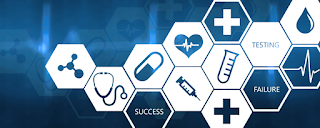Arterial thrombosis is the formation of blood clots inside the artery. The formed clot usually does not show any kind of symptoms until it restricts the blood flow through the circulatory system. This can cause serious health complications such as heart attack, stroke, transient ischemic attack (TIA), and critical limb ischemia. Arterial thrombosis can occur at any age; however, it is common in adults aged 60 years or above. People who are older, overweight, and suffering from diseases such as autoimmune disorders (lupus, rheumatoid arthritis, etc.) or cancer are at a higher risk of developing arterial thrombosis. Unhealthy lifestyle and suffering from high blood pressure, diabetes, or high cholesterol increase the risk of developing arterial thrombosis. Arterial thrombosis is less common in women compared to men.
Arterial thrombosis is a life-threatening medical condition that requires immediate medical treatment. The treatment primarily focuses on breaking the blood clots and preventing further formation of clots. The treatment includes use of blood-thinning agents such as anticoagulants (for example, unfractionated and low-molecular-weight heparin as well as warfarin), antiplatelet agents (such as clopidogrel or aspirin), painkillers, and thrombolytic therapy (such as streptokinase), which can prevent new clots from forming. The Arterial Thrombosis Drugs Market is expected to expand in the near future, led by the development of novel oral anticoagulants (NOACs) that can offer improved patient care and overcome the limitation of current treatment options.
Novel oral anticoagulants have been classified into direct thrombin inhibitors (argatroban, dabigatran), factor Xa inhibitors (rivaroxaban, edoxaban, apixaban), and factor IIa inhibitor (thrombin). Novel oral anticoagulants offer major benefits over the current treatment options (heparin or warfarin). These include predictable pharmacokinetics, rapid onset and offset of action, and less drug interactions, which abolishes the need for regular coagulation monitoring associated with the conventional therapy. Increase in government expenditure, rise in the rate of incidence of arterial thrombosis, growth in patient awareness about treatment, and high unmet needs of current treatment options are fueling the arterial thrombosis drugs market. However, high cost of treatment and side-effects associated with it act as key restraints for the market.
Request to View Brochure of Report -
The global arterial thrombosis drugs market can be segmented based on distribution channel and geography. Based on distribution channel, the market has been classified into hospital pharmacy, retail pharmacy, and online pharmacy. The online pharmacy segment is expected to expand at a high pace during the forecast period, owing to increase in the number of Internet users and availability of medicines at affordable prices.
In terms of geography, the global arterial thrombosis drugs market can be classified into North America, Latin America, Europe, Asia Pacific, and Middle East & Africa. North America dominates the global arterial thrombosis drugs market, followed by Europe. This is attributable to higher rates of incidence and prevalence than those in Asia Pacific and Middle East & Africa, increase in the demand for advanced treatment options, and rise in geriatric population in North America. Asia Pacific is an emerging market for arterial thrombosis drugs, owing to developing health care infrastructure and rising government expenditure in the health care industry in the region. On the other hand, high costs, lack of proper treatment, and poor patient education are factors restraining the arterial thrombosis drugs market in Middle East & Africa and Latin America.

Comments
Post a Comment